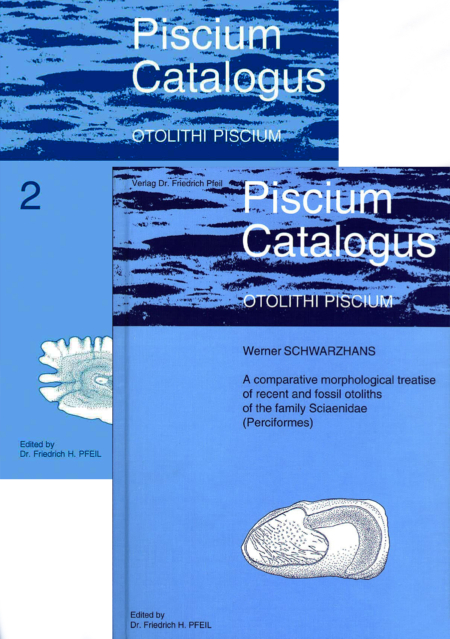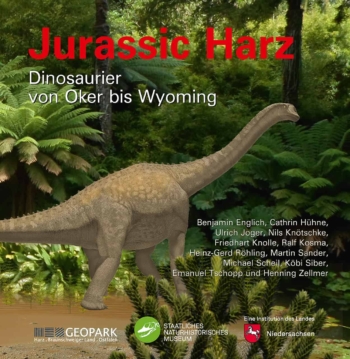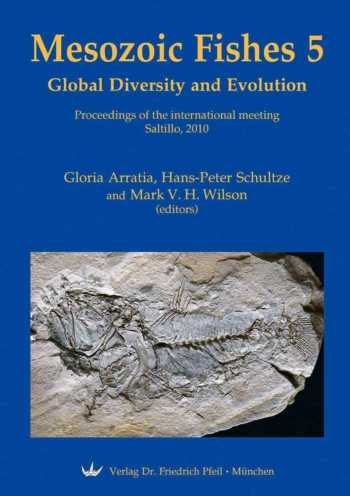Introduction Subclass Archosauria by A. J. CHARIG 1
Order Thecodontia by A. J. CHARIG 7
Proterosuchia by A. J. CHARIG & H.-D. SUES 11
Family Proterosuchidae 16
Family Erythrosuchidae 28
Pseudosuchia von B. KREBS 40
Einleitung 40
Osteologie 41
Schädel 41
Öffnungen im Schädel 41
Schädeldach 41
Gaumendach und Quadratum 45
Hinterhaupt und Neurocranium 45
Stapes, Cornua hyoidea und Sclerotical-Ring 47
Unterkiefer 47
Bezahnung 48
Achsenskelett 48
Wirbel 48
Rippen 51
Gürtel 52
Schultergürtel 52
Becken 54
Extremitäten 56
Vorderextremität 56
Hinterextremität 59
Hautknochen 63
Panzerplatten 63
Gastralia 63
Funktionelle Morphologie 63
Schädel 63
Fortbewegungsapparat 65
Definition und systematische Stellung 66
Systematische Ubersicht 70
Subordo Pseudosuchia 70
Familia Euparkeriidae 70
Familia Rauisuchidae 71
Familia Stagonolepididae 77
Familia Ornithosuchidae 84
Familia Erpetosuchidae 87
Familia Scleromochlidae 90
Pseudosuchia incertae sedis 91
Mögliche Pseudosuchia 91
Nicht Pseudosuchia, sondern primitive Crocodilia 92
Fährten von Pseudosuchia 94
Schlussbemerkungen 95
Nachtrag zu Pseudosuchia 95
Familia Euparkeriidae 96
Familia Rauisuchidae 96
Familia Stagonolepididae 96
Familia Ornithosuchidae 97
Mögliche Pseudosuchia 97
Nicht Pseudosuchia, sondern primitive Crocodilia 98
Phytosauria von F. WESTPHAL 99
Historisches 99
Das Skelett der Phytosaurier 99
Gesamtskelett 99
Schädel 100
Schädelöffnungen 100
Schädeldach 101
Gaumenfläche 101
Hinterhaupt 102
Endocranium 102
Schädel-Kinetik 102
Unterkiefer 102
Zähne 102
Wirbelsäule und Rippen 102
Schultergürtel 104
Becken 104
Extremitäten 105
Gastralia 105
Panzerung 106
Phytosaurier-Fährten. 107
Alters-Variabilität, Sexualdimorphismus und taxonomische Merkmale 107
Zur Systematik der Phytosaurier 108
Gattungen 108
Phylogenetische Tendenzen der Phytosaurier 116
Zum Ursprung der Phytosaurier 118
Lebensweise und Ökologie 118
Geographische Verbreitung 119
Thecodontia incertae sedis: Proterochampsidae von H. D. SUES 121
Literatur 127
Index generum 136
HPH 13 • Thecodontia
1976. [German and English] – 137 pp., 63 figures.
25.5 x 20.5 cm, paperback.
Series: Handbook of Paleoherpetology
75,67 € Original price was: 75,67 €.60,00 €Current price is: 60,00 €.
plus shipping costs
Subclass ARCHOSAURIA COPE 1869
The Archosauria, the «ruling reptiles», represent one of the most important subclasses of the reptiles; they include not only the familiar crocodiles, but also the two separate dinosaur orders, the flying reptiles (pterosaurs) and the common ancestors of all these (thecodontians). All except the crocodilians have been extinct since Mesozoic times. When COPE first proposed the Archosauria, in 1869, he included all the forms just listed except the Pterosauria, which he regarded as an independent taxon of equivalent rank; but he included also three other very diverse groups (Sauropterygia, Anomodontia, Rhynchocephalia) which are now considered to have no close affinities either with the archosaurs or with each other.
Difficult to define anatomically, the archosaurs in their modern sense nevertheless form a very distinct taxon which is not known at present to be connected with any other taxon by transitional genera. This taxon is usually regarded as a subclass, but a few authors have accorded it lower rank; indeed, COPE originally proposed it as an order, for he did not use subclasses. More recently, the Archosauria have sometimes been united with the Lepidosauria to form a common subclass Diapsida (even within the last decade, in such publications as COLBERT 1965b, CRUICKSHANK 1972), in which cases the Archosauria themselves are downgraded (to a superorder or an infraclass respectively). Most authorities, however, prefer to regard the connexion between lepidosaurs and archosaurs as not especially close, going no further than to include them all, together with the chelonians and the birds, in the rather loose grouping known as the «Sauropsida» (GoonRICH 1916, mentioned though not formally employed by ROMER 1956); this is based largely upon the arrangement of the aortic arches, which in all living reptiles is different from that of mammals. Others (e.g. ROMER 1968) doubt the existence of any connexion whatever between lepidosaurs and archosaurs.
This raises the question of the origin of archosaurs, still shrouded in mystery. Those who use the term «diapsid» merely to denote a type of skull structure, e.g. ROMER 1966, 1968, 1971 d, suggest a direct and independent descent of the archosaurs from primitive captorhinomorph ancestors. On the other hand, those who consider «diapsid» to have phylogenetic implications postulate a common origin of both arcbosaurs and lepidosaurs through millerettids; this is perhaps the most conventional view. CRUICKSHANK, indeed, takes this further and suggests (1972) that the earliest archosaurs might be nothing more than slightly modified carnivorous rhynchocephalians, which, if true, would imply that both Archosauria and Lepidosauria had evolved from a common line of ancestry passing back through the Eosuchia to the Millerosauria. REIG has recently published (1967, 1970) an extremely unorthodox theory, argued in detail, which suggests that the archosaurs evolved in water from the ophiacodont-varanopid group of pelycosaurs; this, however, is strongly opposed by ROMER (1971d) and CRUICKSHANK (1972). Even more recent is a novel suggestion by CARROLL (in press) that the Archosauria are of diphyletic origin from the Eosuchia, with the Proterosuchia evolving independently of the rest. This theory is discussed in some detail later in the present work (pp. 12-13).
The fact that there are living archosaurs, but not many, explains the inconsistency of the tenses used in this Introduction.
…
You must be logged in to post a review.
"*" indicates required fields
Related products
We’re here for you
Verlag Dr. Friedrich Pfeil
Hauptstraße 12B
5232 Bergkirchen OT Günding – Germany
Tel.: +49 8131 61 46 590
Fax: +49 8131 61 46 591
E-Mail: info@pfeil-verlag.de
Contact
Tel.: +49 89 742827-0
Fax: +49 89 7242772
E-Mail: info@pfeil-verlag.de






Reviews
There are no reviews yet.